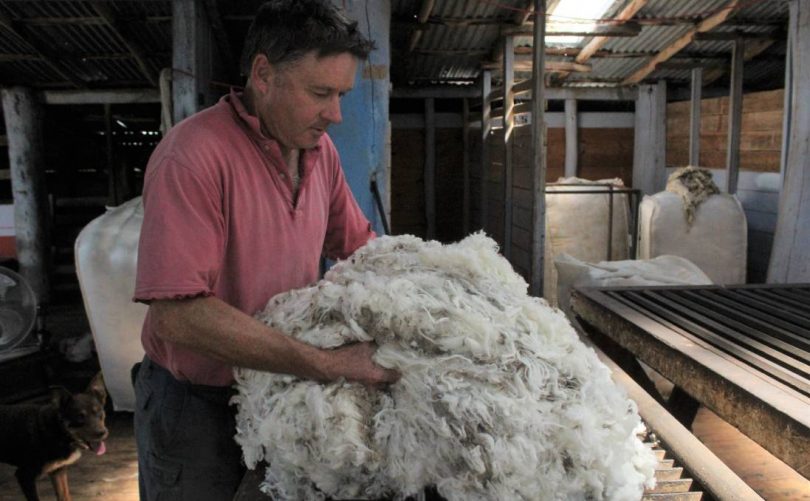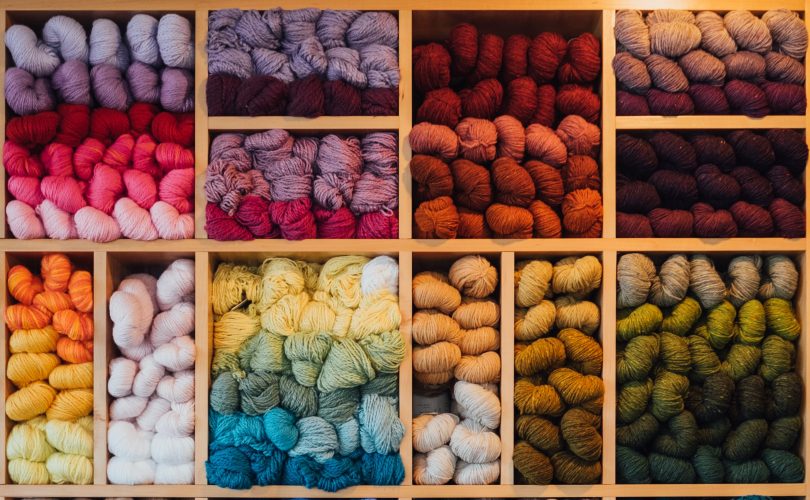
Yass woolgrower and WoolProducers Australia president Ed Storey said the industry’s on-farm practices are “world-leading”. Photo: Hannah Sparks.
The peak body for Australian woolgrowers has launched a campaign to prove to its customers and critics that the industry is working within world-leading frameworks for animal welfare and sustainability.
WoolProducers Australia president and woolgrower Ed Storey, from ‘Werong’ in Yass, said the ‘Trust in Australian Wool’ campaign aims to highlight the “good things wool and sheep producers do”.
The campaign consists of a website and handbook that’s translated for Indian and Chinese readers.
“People can have confidence in the product they’re buying,” said Mr Storey. “Many people know about wool’s sustainability credentials – it’s biodegradable and natural – but not many people know our on-farm practices are world-leading and we have a robust regulatory framework.”
Mr Storey is frustrated by people who think wool growers treat their animals poorly.
“We’re not operating in the wild west,” he said. “We invest in millions of dollars in shearer training and the early detection of diseases. We’re constantly measuring the levels of internal parasites and preemptively vaccinating. We monitor our sheep very closely for flystrike, especially in the season just gone. We’re ensuring growth rates are appropriate and we’re using genetic selection tools to reduce breech wrinkle.”
The point of reducing the wrinkle between a sheep’s tail and hind legs is to stop mulesing. This method, which involves cutting the flaps of skin that attract blowflies from around a lamb’s breech, has been fiercely criticised by animal rights groups and pushed customers to look for ethically produced wool.
Some woolgrowers, such as Trevor Ryan, from ‘Richmond’, Quandialla, west of Young, believe it’s time the industry listened to its customers and stopped mulesing.
Mr Ryan recognised the demand for non-mulesed wool in the early 2000s and hasn’t mulesed his sheep since 2005.
“We can’t fight the people who buy our product,” he said. “You wouldn’t go to a car yard and ask to buy a Ford, only to be told you can’t buy a Ford, you have to buy a Holden. It’s just silly.”

Woolgrower Trevor Ryan believes the industry needs to listen to what customers want. Photo: Supplied.
In order to stop mulesing, farmers have to breed plain bodied sheep without wrinkles on their breech, which can be a lengthy process.
The arguments against breeding these sheep are that they don’t grow as much wool, and they don’t produce wool with the elasticity preferred by a lot of buyers.
Farmers with non-mulesed sheep will also crutch more times per year to keep the wool short around their breech. This is a job that usually takes more than a week to complete and requires a shearer, of which there is currently a shortage.
However, Mr Ryan said he’s frustrated by farmers arguing about the timeframe.
“You hear people say, ‘You can’t do this overnight,'” he said. “But we saw this in the early 2000s so if we keep sticking our heads in the sand and saying we can’t do it overnight, then we’ll never do it.”

The decision whether to produce mulesed sheep is up to individual woolgrowers, according to WoolProducers Australia. Photo: Supplied.
Mr Ryan also argued that plainer bodied sheep have come a long way and can cut the same amount of wool as other sheep and produce wool of high quality.
“But it’s not just about wool,” he said. “When you’re breeding a type of sheep that doesn’t have excess body wrinkle and don’t need to be mulesed, you’re also picking up fertility, the sheep are naturally better-doing animals and they’ve usually got better carcass traits such as muscle and fat. There’s a lot of bonuses that come with the package.”
WoolProducers Australia supports Mr Ryan’s views but says it’s up to each producer to decide whether or not to mulse.
“At the end of the day, we work in a market economy in Australia and individual producers will make decisions based on what is best for them,” said Mr Storey. “But there’s no doubt many of our customers would prefer non-mulesed wool.”
The peak body advocates that woolgrowers who do mules use pain relief. Mr Storey says most do.






